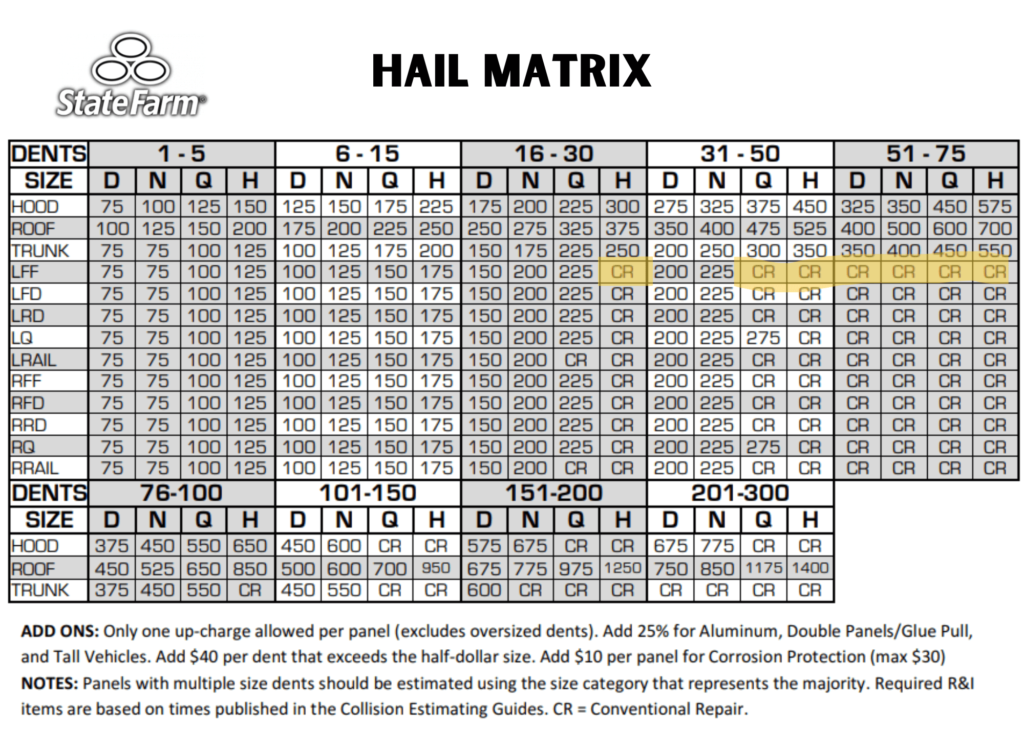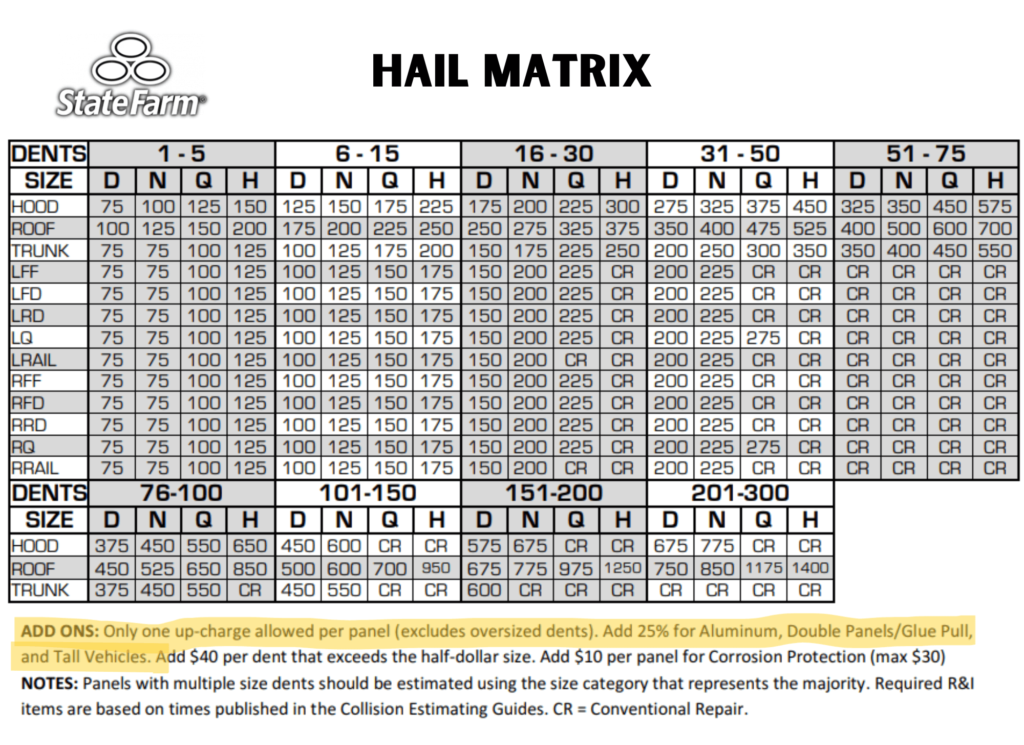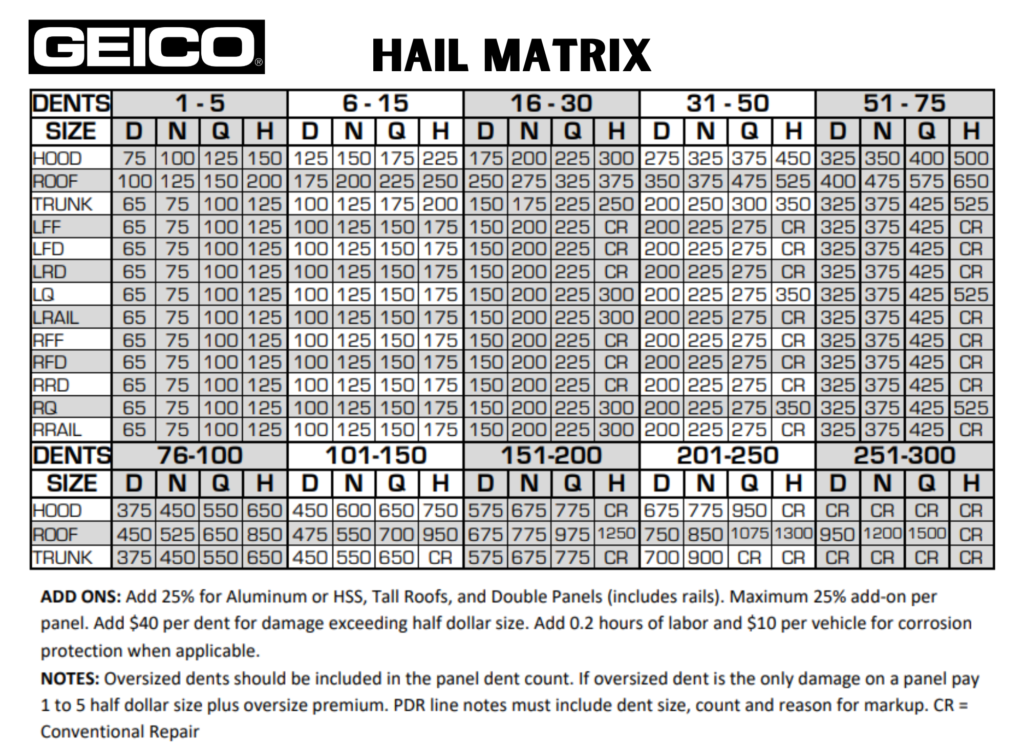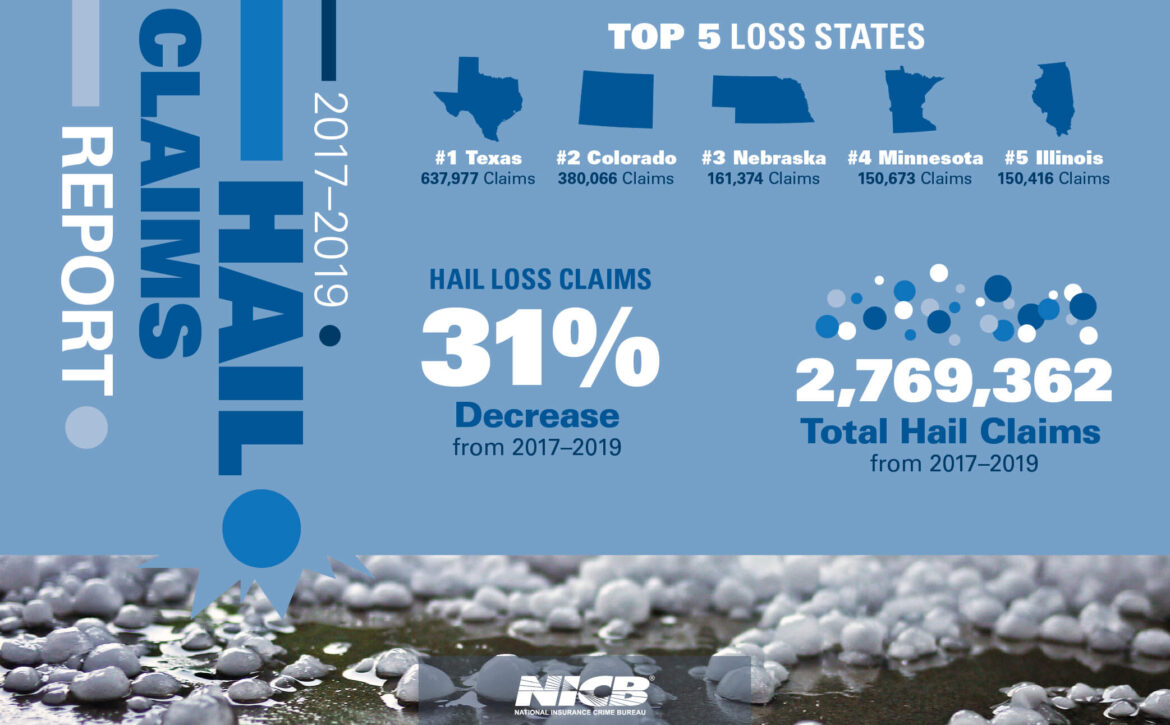How do the TOP 10% ELITE Professionals handle Hail Repair?
When a hailstorm strikes, it can wreak havoc on your vehicle, leaving behind a ton of dents and damage. But fear not, because there are professionals who specialize in hail repair and can restore your car to its pre-storm glory. In this article, we will delve into the world of hail repair and uncover the techniques used by the experts to repair hail damage.
The elite hail repair professionals employ a variety of methods to restore your vehicle’s body panels to their original condition. From paintless dent repair to blending to prepping a panel for bodywork, these skilled technicians have the knowledge and tools to make your car look as good as new. By using specialized, industry specific tools and techniques, they can manipulate and remove dents without the need for costly repainting.
So how exactly do they do it? Dive into our comprehensive guide to learn about the step-by-step process, including assessing the damage, preparing the surface, and applying the necessary repairs. We’ll also shed light on the benefits of choosing a professional hail repair service and the importance of addressing hail damage promptly.
Don’t let hail damage diminish the beauty and value of your vehicle. Discover the world of hail repair and learn how the professionals bring your car back to life.
Assessing the extent of hail damage
Hail damage repair is a meticulous process that requires careful assessment and skilled craftsmanship. The first step in the process is to assess the extent of the damage. Hail can cause dents of various sizes and depths, and it’s important to determine the severity before proceeding with the repairs. This assessment helps the professionals understand the scope of the work and plan the repair process accordingly. Most technicians use some sort of estimating software or a hail matrix to help with the assessment.

Typically, hail repair technicians will clean the areas and removing any debris or contaminants that may hinder the assessment and the repair process. The surface needs to be smooth and free from any obstructions to ensure a seamless repair. A dirty panel is more difficult to work with as it interferes with the specialized lights used to observe the damage during repair and the hail estimate process.
After the surface has been prepared, the hail repair professionals employ various techniques to remove the dents. One of the most common methods used is the Paintless Dent Repair (PDR) technique.
Types of tools and equipment used in hail repair

Paintless Dent Repair (PDR) is a highly effective technique used by hail repair professionals to remove dents without the need for repainting. This technique is particularly suitable for minor to moderate hail damage, where the paint surface is still intact. PDR involves using specialized tools to effectively observe the damage, to gently massage and manipulate the metal back into its original shape and to tap back down should the need arise.
These tools are:
– PDR light. An led light with different hue options that creates a “soft” glow across the damage.
– PDR hail rods. A majority of the damage is taken out with these rods as they reach the most area.
– PDR whale tails. Tools that have a wider end, but tend to be flat to provide access under support beams and tight areas.
– PDR hand tools. Smaller tools, that are used when techs can reach the damage within arms reach.
– Knockdown and hammer. Hail technicians don’t just push the damage out, they also have to correct high areas.
– Glue Pull system. When a technician can not get their PDR rods or hand tools on a dent, they use a glue pulling system. This includes, glue tabs, HAIL specific hot glue sticks, glue gun, slide hammer or mini lifter.
– R & I equipment. Any tool necessary to remove and install interior pieces, hoods, tail lights, etc. when preparing a vehicle for repair and after it is repaired.
The techniques for paintless dent repair tends to be highly precise and requires a skilled technician who can manipulate the metal without causing any further damage while using the proper tools. It is a time-consuming process that demands patience and finesse, but the end result is a seamless repair that preserves the original paint and finish of the vehicle. Without the proper tools, a full automotive hail repair is typically not feasible.
Paintless Dent Repair (PDR) technique
The PDR technique involves several steps to ensure a successful repair. Here is a breakdown of the process:
– Assessment: The technician carefully assesses the dents and determines the best approach for repair. They consider factors such as dent size, location, and accessibility.
– Access: The technician gains access to the backside of the dent by removing trim pieces or interior panels. This allows them to reach the dent from behind and apply the necessary pressure to manipulate the metal. If there is no access, the technician will use a PDR glue pull kit.
– Manipulation: Using specialized tools, the technician applies pressure to the backside of the dent, gently massaging and pushing the metal back into its original shape. They work in a systematic manner, gradually working out the dent until the surface is smooth and undamaged. The technician will likely “tap” the high areas that occur with hail hitting the panel and the pushing a technician does.
– Checking: The technician constantly checks the progress of the repair by examining the surface from different angles and using specialized PDR lighting to ensure that the dent is fully repaired. They make any necessary adjustments to achieve a flawless result.
– Finishing Touches: Once the dents have been completely repaired, the technician performs any necessary finishing touches to ensure a seamless blend with the surrounding panels. This may involve smoothing out any imperfections or applying touch-up paint if needed.
The PDR technique is highly effective for hail damage repair, as it allows for a precise and seamless restoration of the vehicle’s body panels.
Other methods of hail damage repair
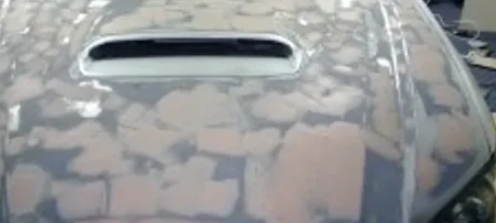
While PDR is a popular and effective technique, it may not be suitable for all types of hail damage. In cases where the paint is damaged or the dents are too severe, other methods of repair may be employed.
One such method is traditional bodywork, where the damaged area is sanded down, filled with body filler, and then repainted. This method is more time-consuming and expensive compared to PDR, as it involves repainting the affected area.
This LOWERS the value of your vehicle.
Most body shops are graded by insurance companies by something called “CYCLE TIME”. When a hail repair job has to be body shopped vs. PDR’d, the cycle time increases.
Another option is the use of specialized tools and techniques for pulling out larger dents. This method may involve using suction cups, glue tabs, or pulling devices to gradually pull the dent out. While it may be effective for certain types of dents, it may not always provide the same level of precision as PDR.
Choosing a professional hail repair service
You are allowed, by law, to repair your vehicle with the company YOU CHOOSE. You are not required to go to their recommended shop. There are reasons they send you to their shop of choice….
A few things to consider:
– Cost. The cost of hail damage repair can vary depending on various factors such as the extent of the damage, the repair method used, and the make and model of the vehicle. In general, PDR is a more cost-effective option compared to traditional bodywork, as it eliminates the need for repainting.
– Experience. Experience in repairing hail damaged vehicles is a must, but what about experience in claims processing? Can they negotiate properly with the insurance company for a fair compensation? How about writing a proper estimate? How about work flow management? What about customer service? All of these things feed into the company’s REAL experience in handling your hail damaged car or truck.
– Timeliness. Each company is different in scheduling and repair cycle times. When you decide who to choose to repair your vehicle, you need to find out how long until you can schedule and how long will they need your vehicle. If you choose a body shop to do the repair and they do not have a hail repair technician on staff, the job will delay longer than it should as they will have to wait on more parts, keep their internal staff working on it, etc.
– Deductible. If you go through a traditional Bodyshop, it will likely charge you your deductible. They are required to IF THEY ARE PART OF A DRP. A DRP is a direct repair program where the shop charges the insurance company less to do the job but must jump through the insurance company rules for said DRP. If you go through a hail technician, they will typically cover or waive your deductible as most of the repair is labor.
– Trustworthy. In todays world, reviews are king. Follow up and perform due diligence on any company you are looking at using. Look into their reviews. Do they warranty their work? Are they recommended?
Prior to choosing a hail repair center, it is recommended to get a detailed estimate before proceeding with the repairs. This will help you understand the costs involved and make an informed decision.
USE THE HAIL EST APP to create an estimate.
The cost of hail damage repair
Hail damage repair cost variables:
– Labor rate. Every area has different autobody labor rates. (There are also Mechanical rate, Paint rate, Supply rate etc.). At laborratehero.com you can punch in your zip code and it will give you posted labor rates in the area.
– Labor hours. For every panel that needs repair, there are labor hours associated with it. Those typically include; R&I (remove and install) to get access, R&R (remove and replace) to replace parts, Paint time, etc.
– Parts pricing. Any part that can not be repaired with PDR is normally replaced (best choice as adding Bondo to your panel does not return it to pre loss condition). Every part has different pricing. You can look up USED part pricing here: www.CAR-PART.com
– PDR costs. Most PDR cost is defined by something called a “Hail Matrix”. These hail charts were developed to create a guideline when pricing the repair cost for hail damage when using PDR. Our app incorporates this matrix into our evaluations.
Remember, addressing hail damage promptly is important to prevent further damage and maintain the value of your vehicle. By choosing a professional hail repair service and following preventive measures, you can keep your car looking its best even after a hailstorm. Don’t let hail damage dull your vehicle’s shine – trust the professionals to restore it to its former glory.
According to STATE FARM, the average cost for hail repair on a vehicle is now over $5,000.00.
Conclusion and preventive measures for hail damage
To prevent hail damage in the future, consider the following preventive measures:
1. Garage or Covered Parking: Whenever possible, park your vehicle in a garage or covered parking area to protect it from hailstorms.
2. Car Covers: Invest in a car cover that is designed to withstand hail. This can provide an added layer of protection for your vehicle during a storm.
3. Stay Informed: Stay updated on weather forecasts and be prepared to take necessary precautions when a hailstorm is predicted. If possible, move your vehicle to a safe location before the storm hits. A great site to see potential for hail is: SPC HAIL PREDICTION




